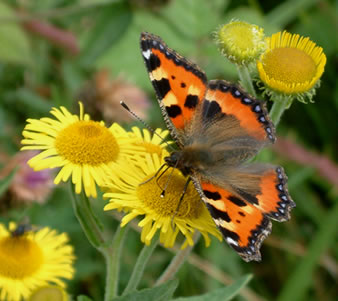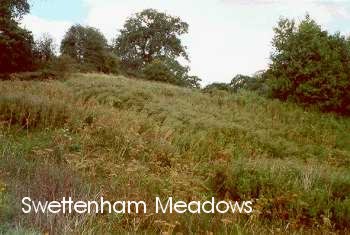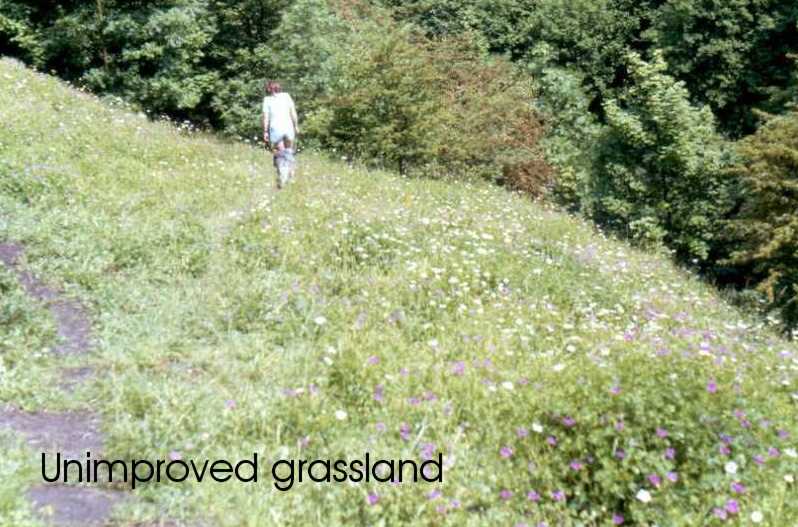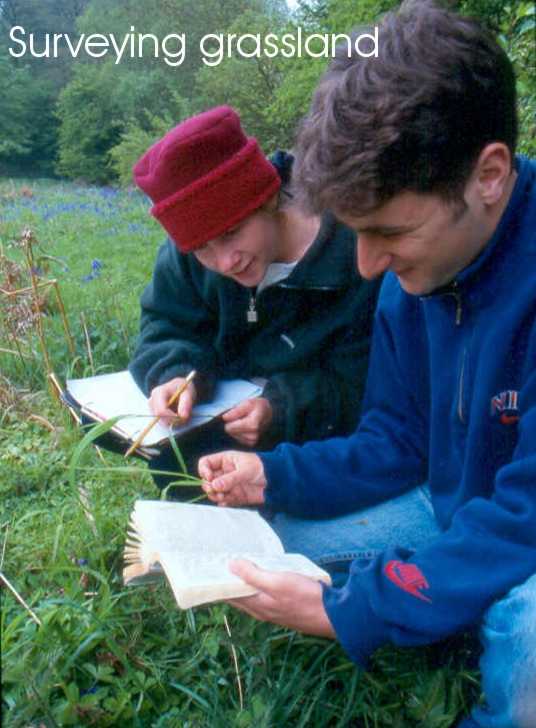UNIMPROVED GRASSLANDS
LOCAL BIODIVERSITY ACTION PLAN
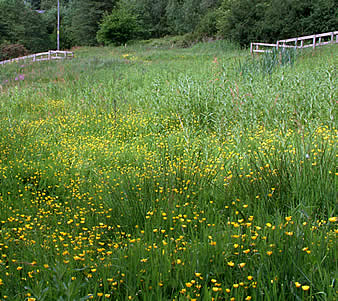 Links to associated SAPs
Links to associated SAPs
None
Current Status
Before the influence of humans on the British landscape, grassland was limited to natural clearings in woodlands, high altitudes above the tree limit and coastal areas. Once people began clearing the woodlands for agriculture around 6,000 years ago, grasslands flourished with the new opportunities this provided. Since then grassland has been valuable agricultural land, managed by a combination of grazing, mowing and the light application of manure. However, this century the need to increase productivity has led to management techniques; ploughing, reseeding and the use of herbicides and artificial fertiliser that have destroyed the traditional grasslands. Britain has lost more than 95% of its unimproved grasslands and, since 1939, the Cheshire region has lost 99%. In the Cheshire Grassland Inventory only 860ha of unimproved grasslands were found (McHarry 1997).
There are many different types of unimproved grassland, from acid to calcareous, from wet to dry, from short turf to coarse swards. True meadows are managed to produce a crop of hay that is cut in late June to July. The flowering plants in a meadow set seed before the crop is removed and the aftermath is then grazed. Pastures are used for stock grazing at any time of the year.
After hundreds of years of such traditional management distinctive regional variants of grasslands have evolved. Lowlands of the Cheshire region typically sustain grasslands with great crested dog's-tail, common bent and black knapweed (Newton 1971). The grassland ecosystem contains communities of specialised insects which are tuned to the traditional patterns of management and many other animals are dependent on this rapidly declining habitat.
Threats
- Intensification of management: ploughing and reseeding, drainage, application of herbicides, pesticides and artificial fertilisers.
- Neglect of meadows leading to increased coarse grasses and scrub invasion.
- Overgrazing causing the loss of herbs and the increase of grasses.
- Abandonment of traditional management methods, especially after change of ownership.
- Poorly advised tree planting scheme on 'poor' agricultural land assisted by grants for creating woodlands.
- Non-agricultural developments.
How are we helping to conserve Unimproved Grassland in the Cheshire region?
- Grassland surveys by volunteers leading to designation of many grasslands as Sites of Biological Importance.
- Continuing the ongoing work on the Grassland Inventory by identifying new sites and surveying known ones in the Cheshire region.
- Visits to landowners by CWT and FWAG staff.
- The River Dane Grassland Survey.
- Local BAP Group established
- Inclusion of grassland sites in Cheshire County Council's GIS database.
- Definition of grassland restoration areas as part of Life ECOnet Project
- Grassland creation included in restoration proposals for closed landfill and mineral extraction sites.
Objectives and Local Targets
OBJECTIVES |
LOCAL TARGETS |
- To map, survey and extend this habitat.
|
- Identify and rehabilitate by the year 2000 the priority areas of existing reedbed (targeting those of 2ha or more) and maintain this thereafter by active management·
- Create 1,200ha of new reedbed on land of low nature conservation interest by 2010.
|
ACTION REQUIRED |
- Encourage long term sympathetic management of unimproved grasslands.
- Increase public awareness of the importance of conserving unimproved grasslands.
- Increase farmer and landowner awareness of the importance of conserving unimproved grasslands and the possibilities for Countryside Stewardship grants in co-operation with other agencies.
- Encourage landowners and developers to create grasslands of appropriate types.
- Link up the Cheshire Grassland Inventory with national grassland databases.
- Highlight species that can be used as indicators of unimproved grassland, especially if they are indicative of regional grassland communities.
- Monitor known sites for changes due to management, either sympathetic or unsympathetic.
- Investigate and highlight fauna that are integral to the unimproved grassland ecosystem.
- Highlight importance of conserving a continuous network of unimproved grassland sites with other habitats rather than isolated cases among intensive agricultural land.
- Encourage the continued growth of organic farming, especially for organic meat from traditionally managed grasslands.
|
Progress so far
| 1997 - 2005 Action Completed |
- Establishment of GIS database for important grasslands within the administrative area of Cheshire County Council.
- Grassland Creation at Hassall Road and Neston Closed Landfill Sites
- Inclusion of grassland creation in restoration proposals for a sand quarry at Delamere.
- 53ha of existing unimproved grassland surveyed.
- 10.5ha of new species rich grassland created through Cheshire County Council's Strategic Programme of Reclamation.
|
How to find out more about Unimproved Grasslands
The Wirral Biodiversity Action Plan for meadows can be seen at www.wirral.gov.uk/ed/biodiversity/meadows.htm
UK BAP for Lowland Meadows - www.ukbap.org.uk/UKPlans.aspx?ID=10
UK BAP for Upland Hay Meadows - www.ukbap.org.uk/UKPlans.aspx?ID=11
Contact details
| LBAP Chair |
Cheshire Wildlife Trust
Phone: 01948 820728 |
| National Lead Partners |
Countryside Council for Wales |
| National Contact |
Tim Blackstock, Countryside Council for Wales
Phone: 01248 385687
|
References & Glossary
McHarry, J. (1996): Cheshire Grassland Register, Cheshire Wildlife Trust
Newton, A. (1971): Flora of Cheshire, Cheshire Community Council.


 Links to associated SAPs
Links to associated SAPs 